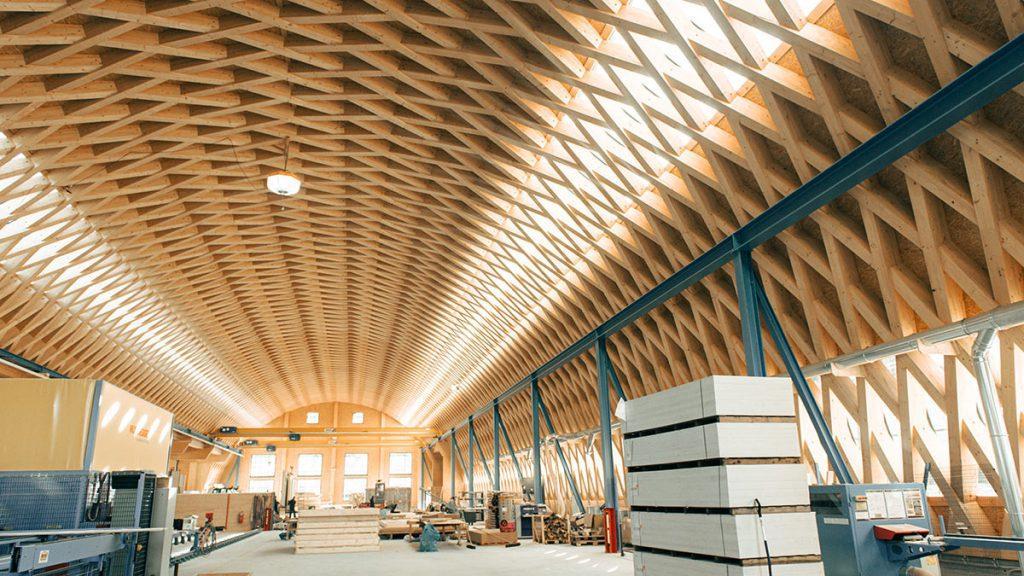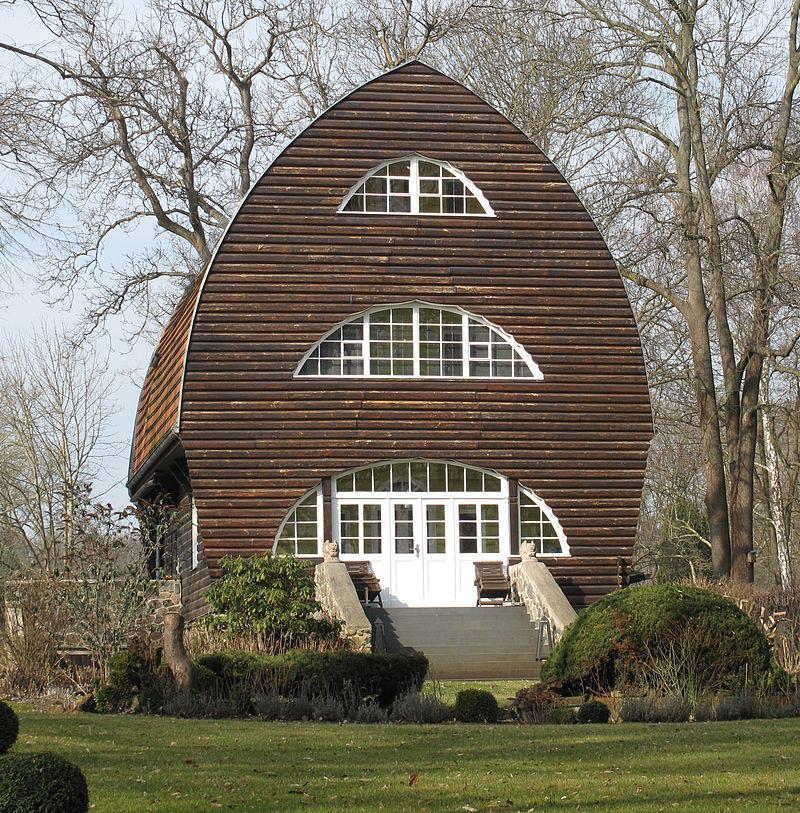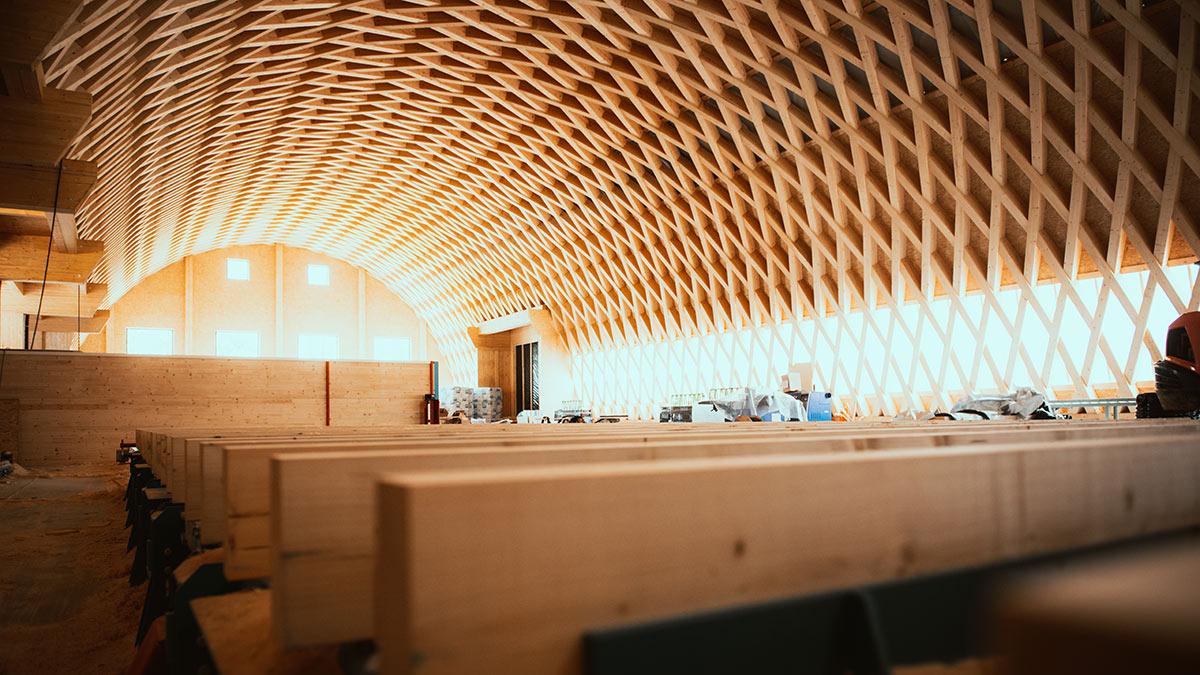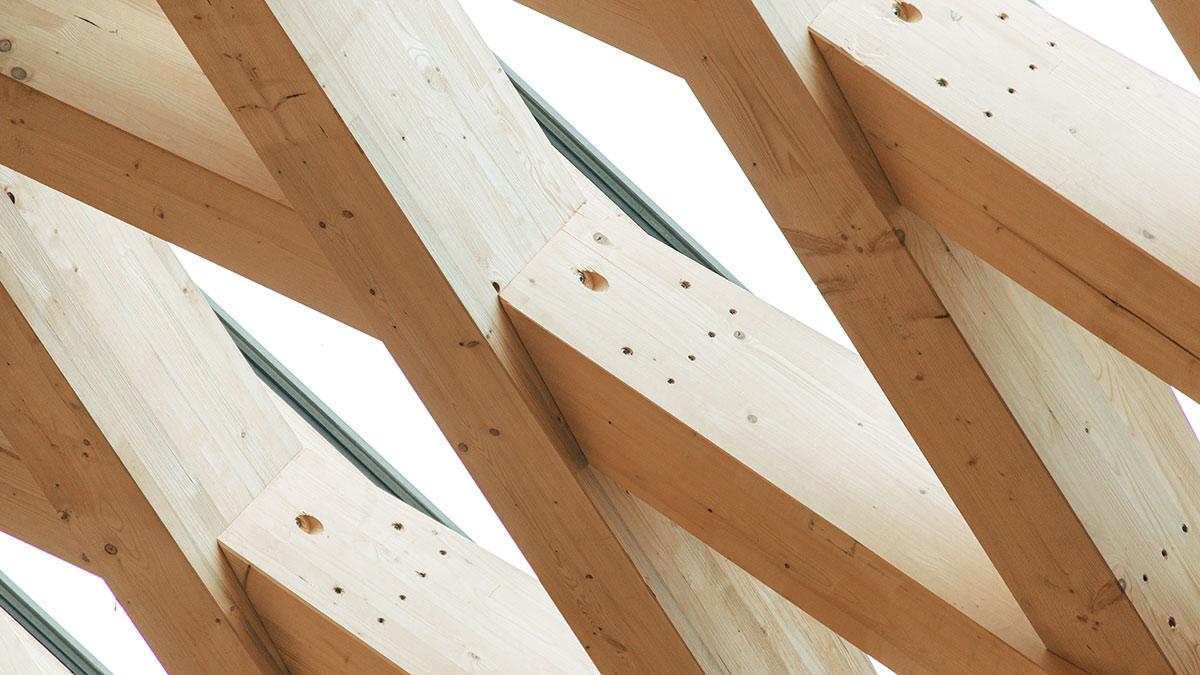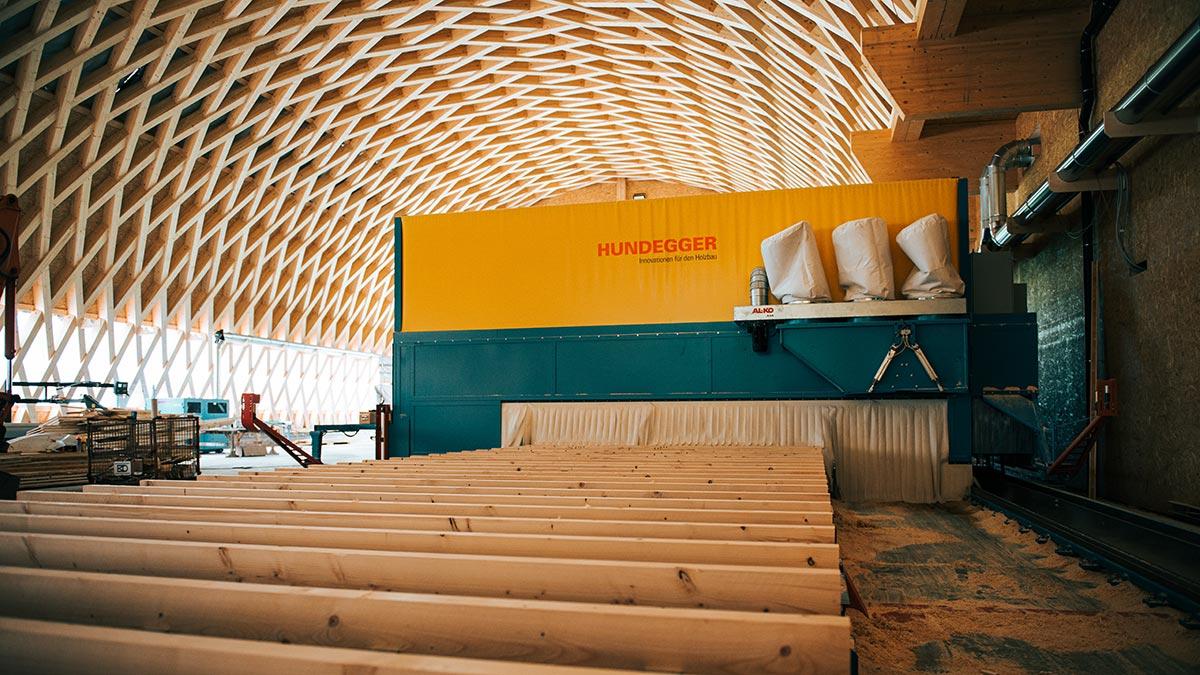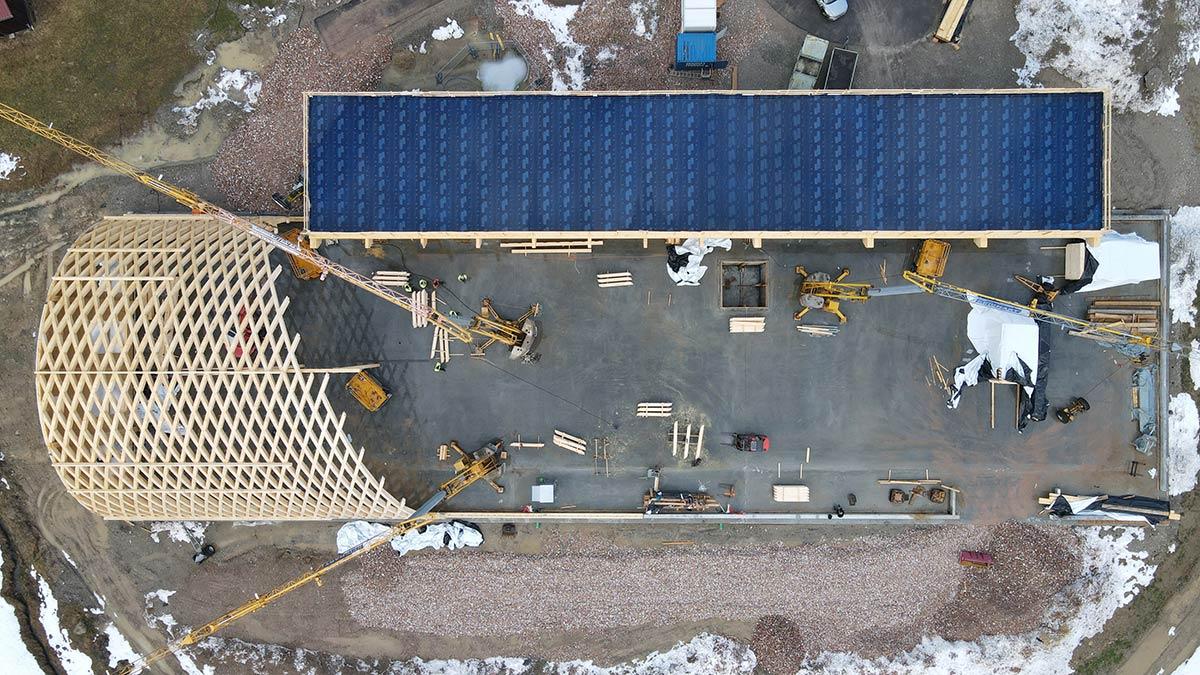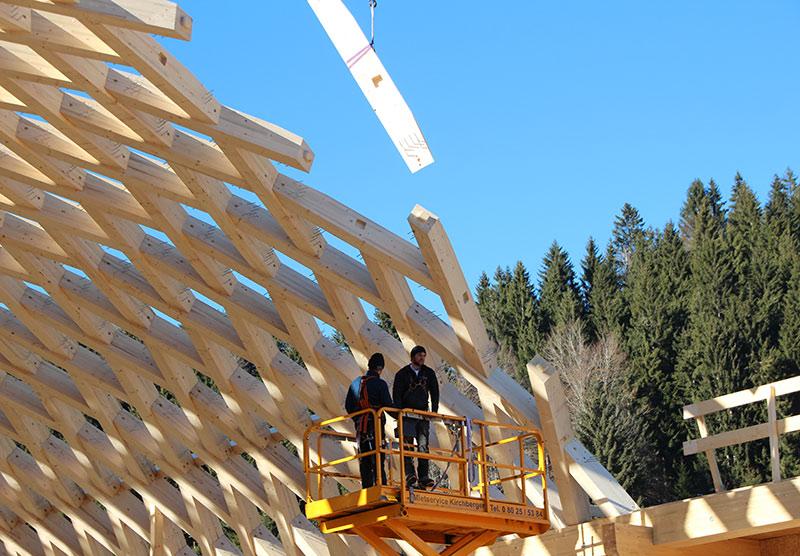Old method stages a comeback
One hundred years after patenting of the Zollinger roof, this self-supporting timber structure is experiencing a renaissance. Designed to save materials, recyclable and easy to build, it has regained popularity for the construction of today’s factory workshops.
Forming an expansive arch, a latticed roof stretches along the length of the 80-metre production hall. The space underneath is able to flow freely from one end to the other, interrupted by neither columns nor pillars. This lamella construction made of wood creates aesthetics that are unexpected in a factory workshop, with its focus on functionality. Built by timber engineering company Reichart Holzbautechnik, although the hall is a construction that reduces the use of materials, it is also a striking example of their timber construction expertise.
Innovation combats housing shortages
The vaulted hall in the Bavarian spa town Oberstaufen draws inspiration from the Zollinger roof that was originally developed by Merseburg’s master builder Friedrich Zollinger. He was granted the patent for this construction system just over 100 years ago, in 1923. As is the case with many innovations, it was also developed out of necessity. In the 1920s, Germany was focusing on building new living space as cheaply and rapidly as possible.
A structure like this indicates to customers that we are not just any manufacturer, but instead passionate about developing timber constructions.
Helmut Reichart, master carpenter in Oberstaufen
The construction method devised by Zollinger is based on a grid of timber elements as a structural framework. These are prefabricated individual pieces that are put together in a diamond-shaped design. This construction had numerous benefits compared to roof trusses with a conventional method: the amount of wood could be reduced by 40 percent, while allowing a better use of space. In addition, modular building proved so simple that building contractors and amateurs were able to help with assembly, which additionally lowered the costs of construction.
Fit for the future
100 years on, the construction sector is again on the search for clever ideas and innovations. Man-made climate change is currently presenting the greatest challenge ever experienced by the industry. There is a demand for resource-friendly and biobased construction solutions that turn the built environment – in addition to forests and moors – into a carbon sink. When wood or straw, for example, are used as building materials, the carbon that is stored inside remains locked up over the long term, while newly planted trees and crops can absorb more CO₂ from the air.
As the vaulted lamella structure based on Zollinger’s design combines these ecological requirements, it can be considered progressive – even though it is over one hundred years old. And these days, calculations for structural design are much more precise. While for many decades the forces at work here could only be proven as an approximation, today’s digital planning tools are able to solve imprecisions.
A research group from Leipzig University of Applied Sciences (HTWK) modernized this construction method, and in 2016 they were presented with an award for their outstanding services to monument preservation in Europe.
More space, less material, huge effect
As a result, media interest in Zollinger’s design has increased in recent years, which is how carpenter Helmut Reichart became aware of it. When he purchased an 8,000 square-metre plot of industrial land in 2021 for his company and its 23 workers, he was convinced that he wanted a production hall with a vaulted Zollinger roof.
“I was especially fascinated by the elegance of the construction – it makes a hall like that look extremely good,” the carpenter explained in conversation with timber construction magazine mikado. “A structure like this indicates to customers that we are not just any manufacturer, but instead passionate about developing timber constructions.”
This self-supporting timber structure with its arched shape enables an ideal use of space. A flat load distribution allows large spans without any need for supports. Wood is regionally sourced, and the resource-friendly design saved a lot of material. All planning, production and assembly could be handled on-site by the carpenters themselves.
Angular goes curved
However surprising this might sound to most people, not a single curved beam was used in the construction of their vaulted roof. The individual elements are all straight, with the curved shape only being achieved by slanting joints where the pieces of timber meet. The relatively short pieces of wood are fitted together serially, forming a three-dimensional grid with three lamellae at each point of junction.
Basically, the construction consists of just two recurring elements that can be produced on a large scale using CNC wood-cutting machines. “When you consider that there are about 2,000 individual elements, the issue of cost is hugely important,” explains Reichart. In addition, the design only uses shorter pieces of wood, which are themselves cheaper.
And the familiar vulnerability of the original construction – the bolted connection that was likely to suffer from deformation over time – was eliminated by the carpenter, replacing it with a dowel-type connection.
Aside from the benefits of timber in the path to net zero, the Zollinger roof offers a combination of so many advantages, it is bound to be used more often in future.
Text: Gertraud Gerst
Translation: Rosemary Bridger-Lippe
Photos: Reichart Holzbautechnik
